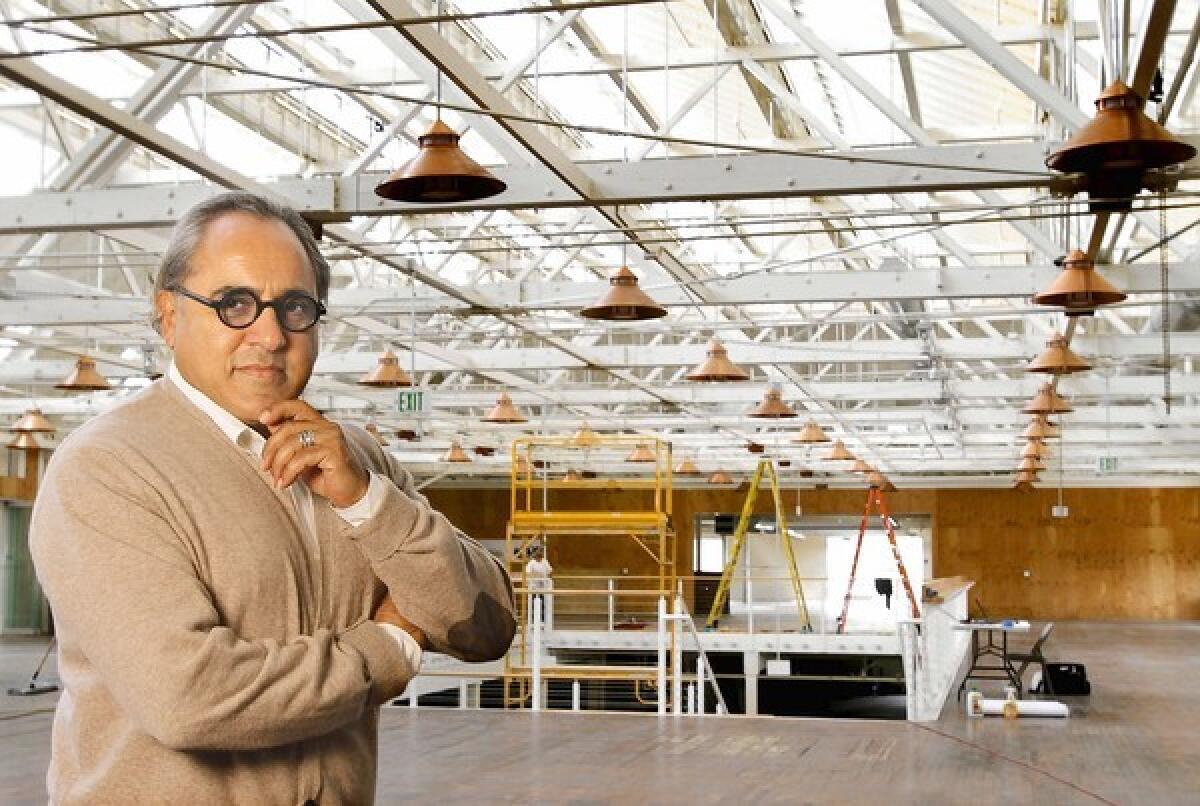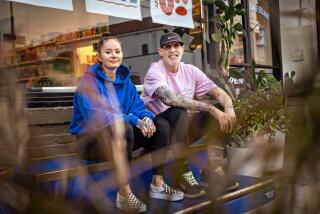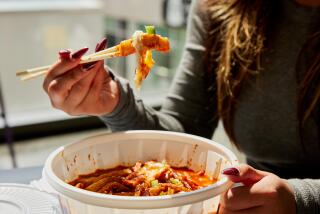A retro-future corner of Anaheim

Wearing round glasses, a buttoned vest and blue wingtip oxfords, Shaheen Sadeghi can’t walk down Anaheim’s Center Street Promenade without being greeted by every shop owner on this three-block stretch of newly opened restaurants and boutiques. He’s the developer who transformed what was once a row of lackluster office buildings into his vision of retro-American retail opportunity, complete with all the telltales of new urbanism: baroque logos, penny tiles, wainscoting and Rockwellian facades. He calls the aesthetic “hip blue-collar worker.”
Among the mix of stores is a haberdashery, yoga studio, raw-food cafe and a barber that plans to serve beer (it’s called Barbeer) and whose staff members wear suspenders and bow ties. Sadeghi says he’s still looking for a florist and “hard-core coffee.” In a city better known for Mickey Mouse than macchiatos, Sadeghi is changing the face of downtown Anaheim.
As founder of LAB Holding, he’s also the man behind the Lab and the Camp in Costa Mesa, the pioneering “anti-mall” shopping concepts that house his mix of small businesses aimed at youth culture. Now, not far from the Promenade, he’s focusing on the next phase of downtown Anaheim’s revamp: a grand food hall in a former Sunkist citrus packing plant.
The nearly 100-year-old, 42,000-square-foot Spanish revival Packing House, owned by the city of Anaheim, has undergone more than two years and several million dollars of renovations. “It was like heart surgery,” says Sadeghi, whose company is the developer-operator.
It’s set to open in the spring with 20 to 25 restaurants and food shops, picked by an in-house team led by Sadeghi, who is known as a shrewd, sometimes controversial curator of retailers. He chooses vendors who hew to his assessment of cultural zeitgeist, whether that’s via vintage design elements or veganism.
The Packing House is the anchor of the 3-acre Packing District, which also includes a renovated Packard dealership that now houses an Umami Burger and Anaheim Brewery, and a park, still under construction, for farmers markets, food trucks, gardens, picnic areas and two cafes.
As for the Packing House, Sadeghi sees it as a place of gathering inspired by markets such as Mercado del Puerto in Montevideo, Uruguay; Boqueria in Barcelona; and Granville Island Public Market in Vancouver, Canada.
Sadeghi is considering a cheese shop, vegetable market, fish market, restaurants serving Mexican, Asian, Middle Eastern and Argentine cuisine, specialty desserts such as organic popsicles and ice cream, coffee shops, spice shops and bars. And “no national brands,” says Sadeghi, whose anti-chain approach toward building shopping centers also applies to the way he thinks people want to eat. “People are tired of shopping malls and supermarkets. There’s a resurgence of food artisans and non-chain operators.”
The Packing House foyer, with its original arched windows and wood floors, leads to a two-story warehouse of a space rehabilitated by Thirtieth Street Architects. Its saw-toothed roof is lined with hundreds of clerestory windows that let light stream in across the currently empty hall, where interior design work is just beginning. Renderings show individual shops and stalls that will range from 300 to 2,000 square feet and will come already equipped with kitchens and furnishings for vendors.
In the plans are a full bar upstairs, another downstairs and a performance venue. Diners will eat communally indoors or outside on a redwood deck with Chinese elms and a carbon steel fireplace designed by landscape architect Ken Smith. Two circa-1940 railroad flatcars from an Anaheim scrap yard will serve as a patio.
So why a food hall instead of another “anti-mall”? “Five years ago there was a transition from consumption to living well,” he says. “People are not spending $300 on jeans; they want dinner with friends and a bottle of wine.”
It’s the continuation of a trend that shaped the evolution of Sadeghi’s Camp in Costa Mesa. It opened in 2002 aimed at the young, eco-conscious and sports-minded who might be inclined to spend a lot on hiking, biking, snowboarding or surfing. But now 60% of the shopping center is made up of food-related businesses, including Taco Asylum, Native Foods vegan restaurant and Ritual Cleanse juice-cleanse specialist.
The next question is whether people will come. Center Street isn’t booming yet, and the intersection of Anaheim Boulevard and Santa Ana Street, where the Packing House is located, isn’t exactly bustling. “We’re 11/2 miles from Disneyland and the convention center; there are 20 million visitors a year,” notes Sadeghi, who expects to attract some of the overflow. He says restaurants and shops in the Packing House will reflect Anaheim’s diverse community of Asians, Latinos and Middle Easterners. “We’re part of the community of the future.”
More to Read
Eat your way across L.A.
Get our weekly Tasting Notes newsletter for reviews, news and more.
You may occasionally receive promotional content from the Los Angeles Times.







